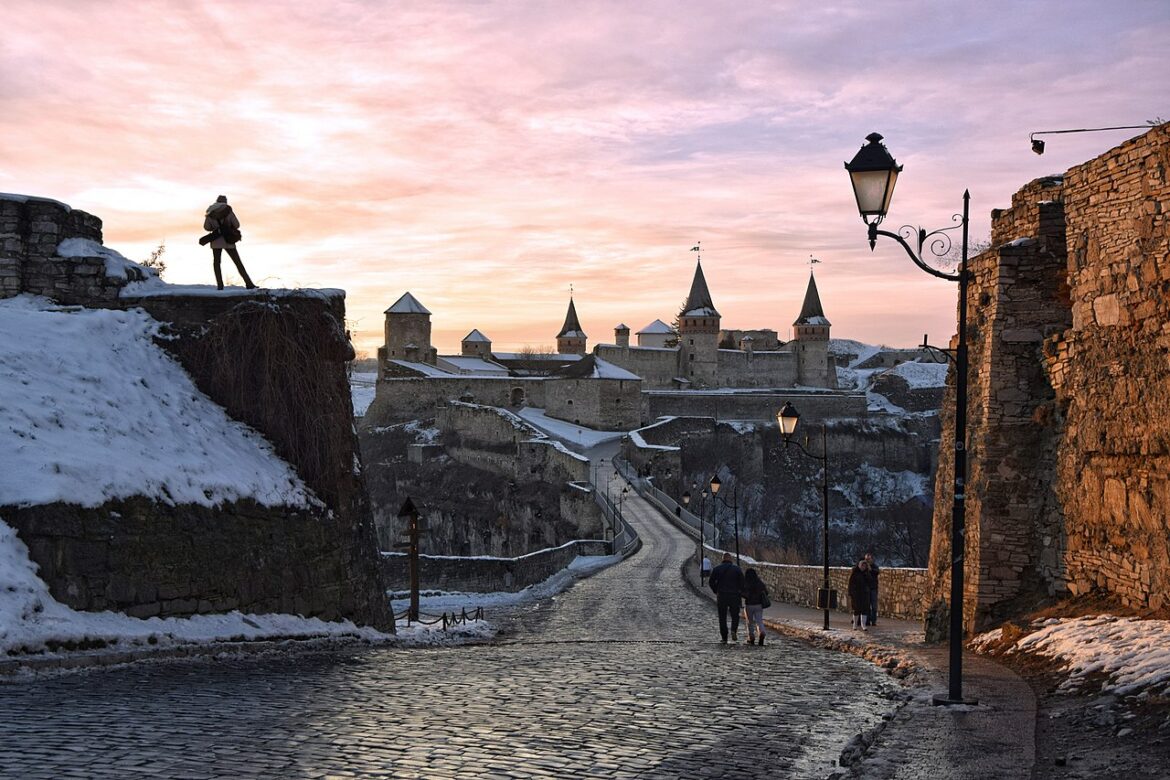For nearly three hundred years, Kamieniec Podolski ( today’s Kamianets Podilskiy) and its fortress protected the south-eastern borderlands of the Polish-Lithuanian Commonwealth. The fortress gained fame not only as the most important Polish stronghold, but also as one of the most powerful in Europe. Formerly bordering the Muslim world, Kamieniec was called “the forefront of Christianity” and “the gateway to Poland”.
Kamieniec owed its strategic importance to its geographical conditions. It was built in the 14th century and steadily expanded on a rocky island located in a four-kilometre loop formed by the Smotrycz River, encircling the city with a labyrinth of ravines and gorges. The few defenders of the fortress were able to stop the mighty invading armies there. Nature and the efforts of many builders created an extraordinary landscape, with the defensive fortifications, town hall and religious monuments side by side: a Catholic church, a Muslim minaret, an Orthodox church, and the tower of the Armenian cathedral.
The fortifications of Kamieniec were so effective that neither the Cossacks nor, for a long time, the Turks were able to conquer them. Polish kings, bishops and popes contributed to the modernisation of the fortress, which defended Christian Europe. The words of the Turkish Sultan during the 1621 expedition, when he said of the castle: “May Allah conquer it Himself”, became legendary.
The belief in the strength of the fortress and the internal turmoil in the country resulted in Kamieniec being unready for defence in 1672. Aware of this, Sultan Mehmed IV therefore began to besiege it in August that year, at the head of an army of up to 300,000 men. This army was equipped with modern artillery, manned by the French. The Polish garrison numbered around 1,600 to 2,000 men. On 26 August 1672, the Poles surrendered Kamieniec to the invaders. During the evacuation of the castle, there was an explosion in the powder magazine, which was later interpreted as a gesture of despair by artillery major Hejking (called Ketling in the well-known novel “Colonel Wołodyjowski”), who allegedly set fire to two hundred barrels of gunpowder. One of the many victims during the explosion was the commander of the fortress defence, Jerzy Wołodyjowski, the prototype of Michał Wołodyjowski, the hero of Henryk Sienkiewicz’s Trilogy.
By 1699, Kamieniec, together with the whole of Podolia, was occupied by the Turks, then returned to the Polish-Lithuanian Commonwealth. After the Second Partition of Poland, it belonged to Russia, and after 1920 to Soviet Ukraine.
During World War II, in 1941, the Germans carried out a mass execution of the Jewish population in Kamieniec, shooting 23,600 people in three days, including several thousand Jews deported from Hungary. It was the first such large-scale execution carried out as part of the Holocaust.





